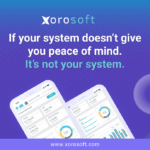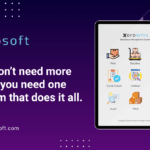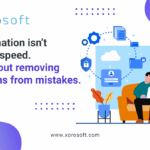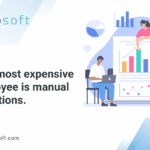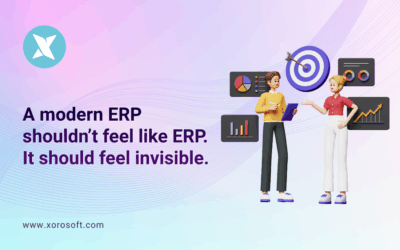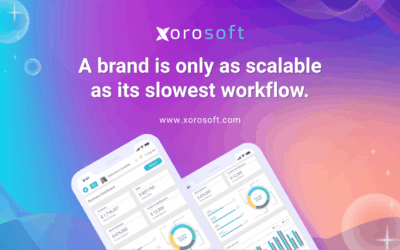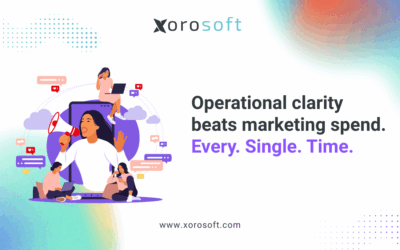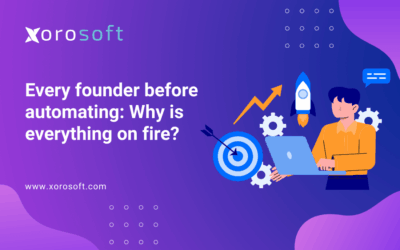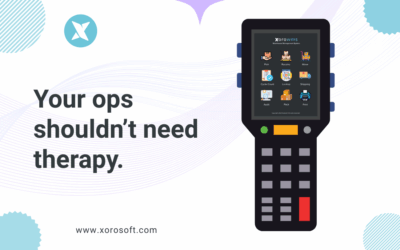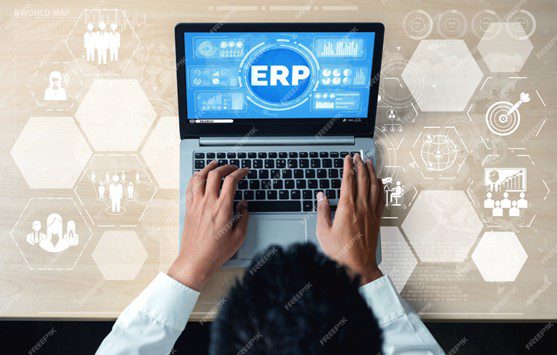
Introduction to ERP Systems
In today’s fast-paced business environment, organizations are constantly seeking ways to improve their operational efficiency and streamline their processes. One area that often poses challenges is purchasing and procurement. Manual methods can be time-consuming, error-prone, and lack visibility into the entire procurement process. This is where an ERP system comes into play. ERP, or Enterprise Resource Planning, is a software solution that integrates various business functions, including purchasing and procurement, into a unified system. By implementing an ERP system, organizations can optimize their purchasing and procurement workflows, enhance efficiency, and effectively manage their vendors.
Benefits of Implementing an ERP System
Implementing an ERP system offers numerous benefits for organizations across various industries. Firstly, it provides a centralized platform for managing all purchasing and procurement activities. This eliminates the need for multiple disparate systems and spreadsheets, saving time and improving data accuracy. Additionally, an ERP system automates many manual tasks, such as purchase order generation, vendor communication, and invoice processing. This reduces the risk of human errors, increases efficiency, and accelerates the procurement cycle.
Another significant benefit of an ERP system is the improved visibility it offers into the entire procurement process. With real-time data and analytics, organizations can track their purchasing activities, monitor vendor performance, and identify areas for improvement. This enables informed decision-making, better negotiation with vendors, and the ability to identify cost-saving opportunities.
Streamlining Purchasing and Procurement with an ERP System
One of the key advantages of an ERP system is its ability to streamline purchasing and procurement processes. The system provides a centralized database where all purchasing-related information is stored, including vendor details, product catalogs, pricing, and delivery schedules. This eliminates the need for manual data entry and reduces the risk of data duplication or inconsistency.
With an ERP system, organizations can automate the entire procurement cycle, from requisition to payment. Requisitioners can submit purchase requests electronically, which can be reviewed and approved by relevant stakeholders. The system then automatically generates purchase orders, sends them to vendors, and tracks the progress of each order. This streamlines the entire procurement workflow, eliminates paperwork, and reduces the time required to complete the process.
Enhancing Efficiency in Vendor Management through an ERP System
Vendor management is a critical aspect of the purchasing and procurement process. An ERP system plays a key role in enhancing efficiency and effectiveness in this area. With a centralized vendor database, organizations can maintain accurate records of all their vendors, including contact details, performance ratings, and compliance information. This enables organizations to evaluate their vendors based on various parameters and make informed decisions when selecting or negotiating with them.
Furthermore, an ERP system provides tools for managing vendor contracts and agreements. Organizations can store contract details, track expiration dates, and set up automated reminders for contract renewals. This ensures that organizations are always aware of their contractual obligations and can take timely actions to renew or renegotiate contracts.
Additionally, an ERP system facilitates seamless communication with vendors. Organizations can exchange messages, share documents, and collaborate on purchase orders or invoices directly within the system. This eliminates the need for manual email exchanges or phone calls, improving communication efficiency and reducing the chances of miscommunication.
Xorosoft ERP: A Comprehensive Solution for Purchasing and Procurement
When it comes to ERP solutions for purchasing and procurement, Xorosoft ERP stands out as a comprehensive and reliable option. Xorosoft ERP offers a wide range of features specifically designed to optimize purchasing and procurement workflows. With its intuitive user interface and robust functionality, Xorosoft ERP enables organizations to streamline their purchasing processes, enhance efficiency, and effectively manage their vendors.
One of the key strengths of Xorosoft ERP is its integrated vendor management capabilities. The system allows organizations to maintain a centralized vendor database, where they can store vendor details, track performance metrics, and monitor compliance. This helps organizations make informed decisions when selecting vendors and ensures transparency and accountability in vendor relationships.
Another notable feature of Xorosoft ERP is its advanced inventory management system. The system provides real-time visibility into inventory levels, allowing organizations to optimize their inventory levels, reduce stockouts, and improve order fulfillment. With automated inventory tracking and replenishment capabilities, Xorosoft ERP helps organizations minimize stock holding costs and eliminate manual inventory management challenges.
The Role of an ERP System in Inventory Management
Inventory management is a critical component of purchasing and procurement. An ERP system like Xorosoft ERP plays a crucial role in optimizing inventory management processes. By integrating inventory data with other business functions, such as sales and production, an ERP system enables organizations to have a holistic view of their inventory levels and demand patterns.
With real-time inventory visibility, organizations can accurately forecast demand, plan production schedules, and optimize inventory replenishment. This prevents stockouts and overstocking, leading to improved customer satisfaction and reduced carrying costs.
Furthermore, an ERP system automates various inventory management tasks, such as stock counting, order processing, and goods receipt. This minimizes manual intervention, reduces the chances of errors, and improves overall operational efficiency. With Xorosoft ERP, organizations can implement barcode scanning or RFID technology to further streamline their inventory management processes.
Integrating Accounting Processes with an ERP System
In addition to streamlining purchasing and inventory management, an ERP system also plays a crucial role in integrating accounting processes. Xorosoft ERP offers seamless integration with accounting modules, allowing organizations to automate financial transactions and ensure accurate bookkeeping.
With an integrated ERP system, organizations can automatically generate accounting entries for purchase orders, invoices, and payments. This eliminates the need for manual data entry and reduces the risk of errors or discrepancies in financial records. Additionally, organizations can generate real-time financial reports, such as accounts payable and accounts receivable, to monitor their cash flows and make informed financial decisions.
How Xorosoft ERP Can Optimize Purchasing and Procurement Workflows
Xorosoft ERP offers a range of features and functionalities that can optimize purchasing and procurement workflows. The system allows organizations to define and enforce standardized procurement processes, ensuring consistency and compliance across the organization. By automating various tasks, such as requisition approvals, purchase order generation, and invoice processing, Xorosoft ERP reduces manual effort and accelerates the procurement cycle.
Furthermore, Xorosoft ERP provides tools for vendor performance evaluation and management. Organizations can set up performance metrics, track vendor ratings, and generate performance reports. This enables organizations to proactively manage their vendors, identify areas for improvement, and strengthen their vendor relationships.
With its advanced analytics and reporting capabilities, Xorosoft ERP enables organizations to gain insights into their purchasing and procurement activities. Organizations can analyze spend patterns, identify cost-saving opportunities, and negotiate better terms with vendors. This empowers organizations to make data-driven decisions, optimize their procurement processes, and achieve cost efficiencies.
Choosing the Right ERP System for Your Business
Selecting the right ERP system for your business is a crucial decision that requires careful consideration. When evaluating ERP systems, organizations should assess their specific requirements, industry needs, and budget constraints.
Key factors to consider include the scalability and flexibility of the ERP system, its ease of use and user interface, the level of support and training provided by the vendor, and the system’s ability to integrate with other business applications.
Additionally, organizations should consider the reputation and track record of the ERP vendor. Xorosoft ERP, for example, has a strong reputation in the market and a proven track record of delivering successful implementations for organizations across various industries.
Conclusion: Unlocking the Full Potential of Purchasing and Procurement with an ERP System
In conclusion, implementing an ERP system can significantly enhance the efficiency and effectiveness of purchasing and procurement processes. By streamlining workflows, automating manual tasks, and providing real-time visibility, an ERP system like Xorosoft ERP empowers organizations to optimize their purchasing and procurement activities.
With its comprehensive features for vendor management, inventory management, and integration with accounting processes, Xorosoft ERP offers a holistic solution that addresses the specific needs of organizations. By choosing the right ERP system and leveraging its capabilities, organizations can unlock the full potential of their purchasing and procurement functions, achieve cost efficiencies, and build strong vendor relationships.
To experience the power of Xorosoft ERP firsthand, book a demo with us today and discover how it can revolutionize your purchasing and procurement processes.
